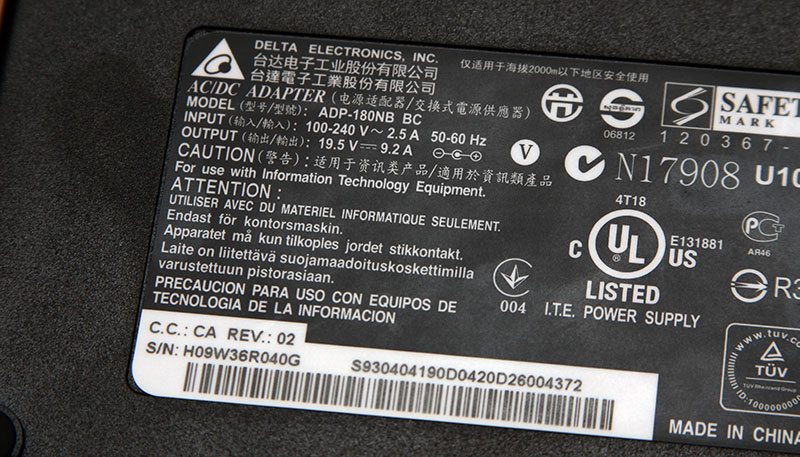MSI GT60-2OK 3K Mobile Workstation Review
Chris Hadley / 11 years ago
A Closer Look
Taking our first look at the GT60-2OK, first impressions are that we are looking at a regular gaming laptop and at a glance it is easy to mistake this unit for one, especially as it has all the same design aspects as one. Built into a 15.6″ frame, the GT60-2OK’s centre piece of attention with out a doubt has to be the gorgeous 2880 x 1620 QWHD+ 3K IPS panel, which has to be the best panel that I have had to work with for a long time. This is not simply because of its super fine resolution, but more the clarity; although I will come back to this point later on in the review.
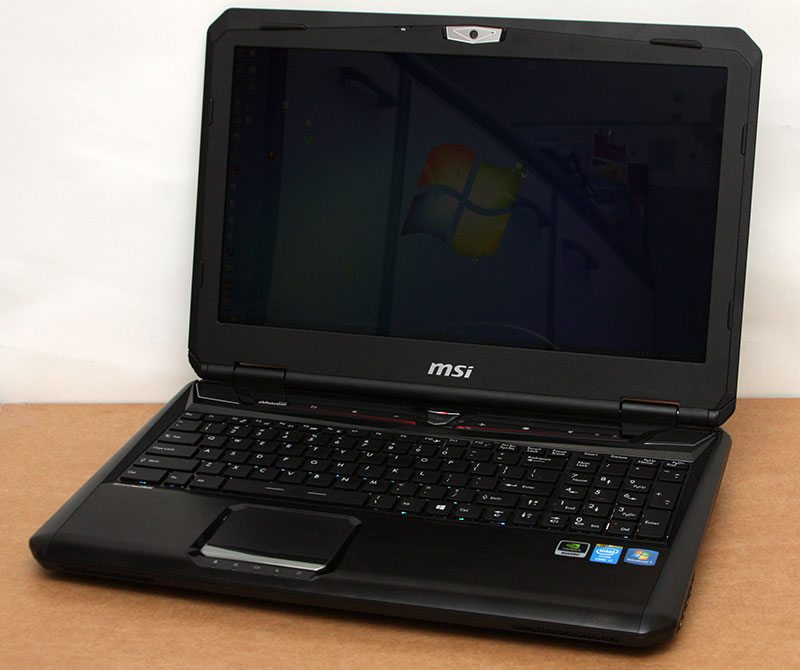
Looking around the rest of the system, the back of the display features a brushed effect black plastic case with matte effect edges and hinges. In in the middle of this is an impressed MSI logo, which lights up when the lid is opened and the system turned on. Whilst this is not clear to see in the bright light, in darker conditions, this adds a little bit of style to the system, letting others know just who is the maker of this fine creation.
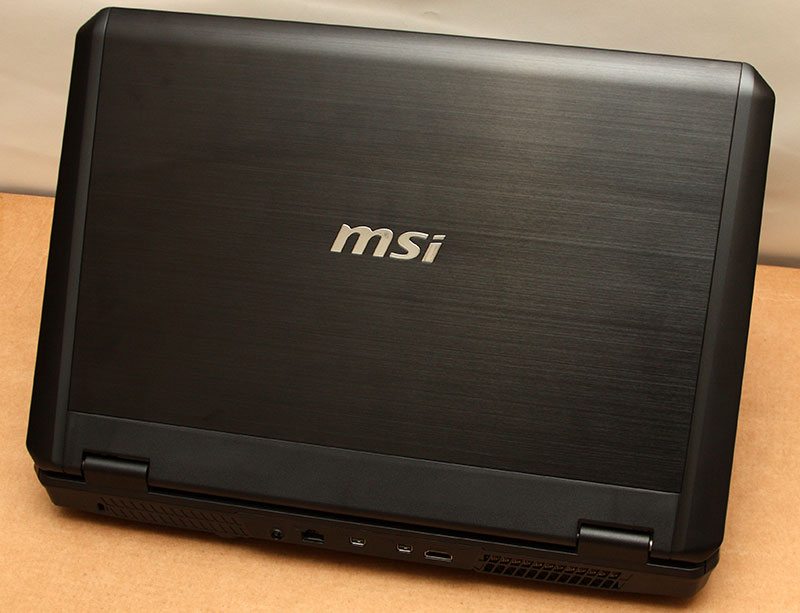
Due to the high amount of hardware that is packed into the chassis, this is by no means an Ultrabook. Weighing in at 3.5kg however, this system is a little lighter than I was expecting it to be when I first saw pictures of it. Measuring in at 5.5cm thick, 39.5cm wide and just under 27cm deep, the GT60-2OK is of a fair size, but in this market, size is a small price to pay for computational power.
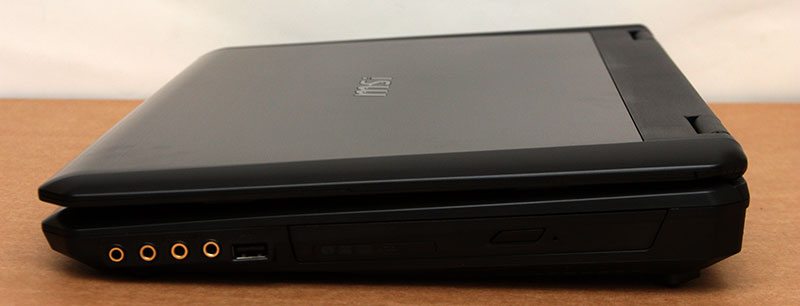
With the lid lifted up, we do note that the keyboard is positioned at a slight angle, which makes for a more comfortable typing position whilst in use.
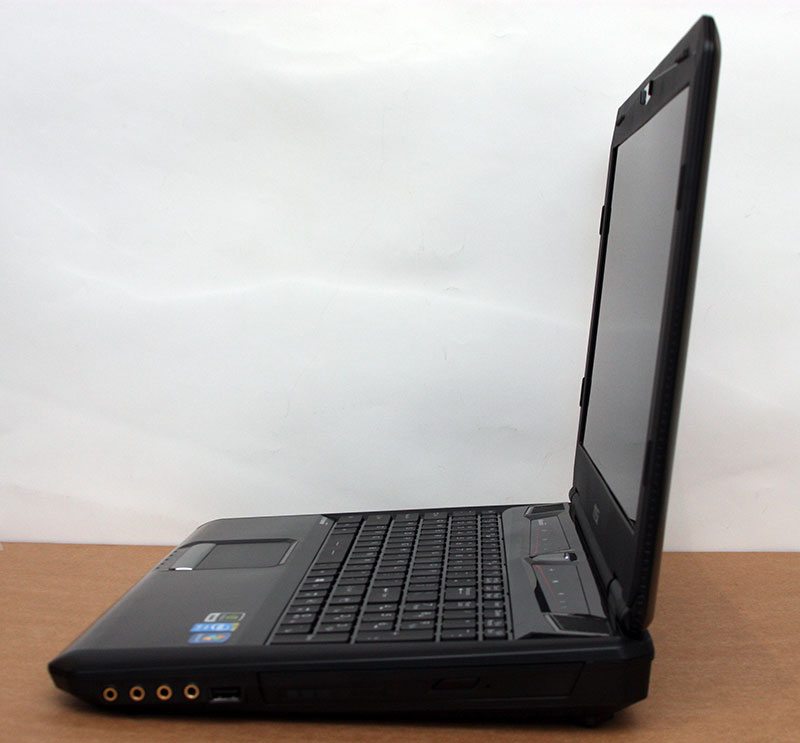
Starting off on the right hand side of the chassis and working our way around, the front corner starts of with a line of four 3.5mm audio inputs and outputs, for headphones, microphone, line-in and line-out beside which resides a single USB2.0 port.
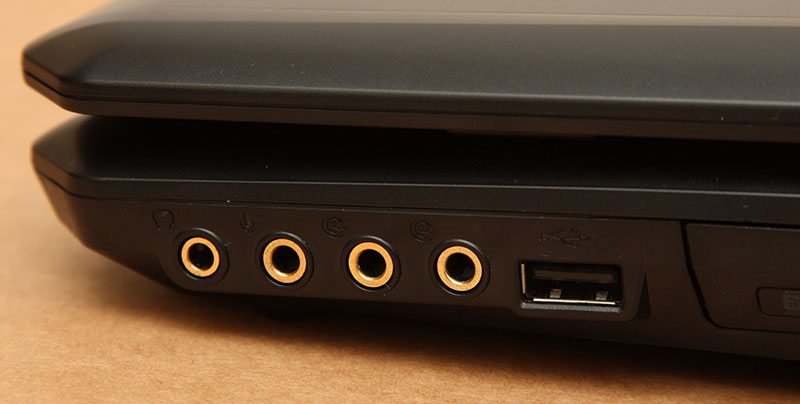
Whilst many of us choose to not use an optical drive these days, especially with how fast the internet has and still is becoming. Having the ability to write to optical media is still a valuable asset for certain operations and as a result we find a Blu-Ray optical burner bundled in for writing to high-capacity optical media.
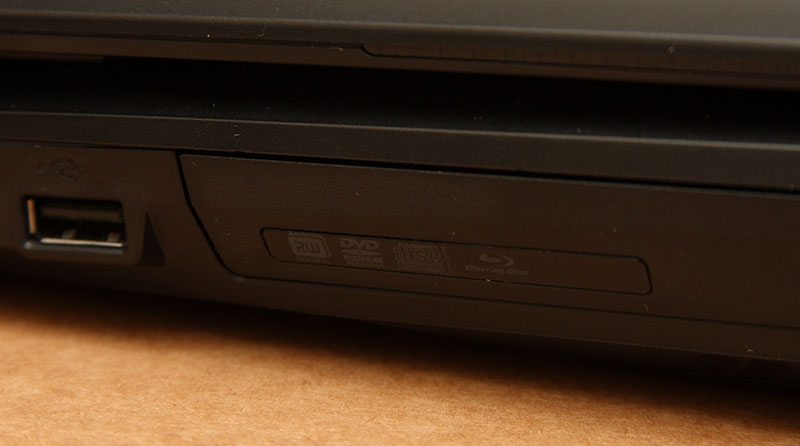
Another key asset that many people tend to overlook is security. With the cost of a system such as this much higher than that of a high-end gaming laptop, making sure the system doesn’t wander away in the wrong hands is paramount. Many users tend to forget that Kensington lock points are included on virtually every monitor, chassis and laptop that is available on the market today. For a relatively small cost of buying a security cable, the potential risk of having a unit stolen is greatly reduced.
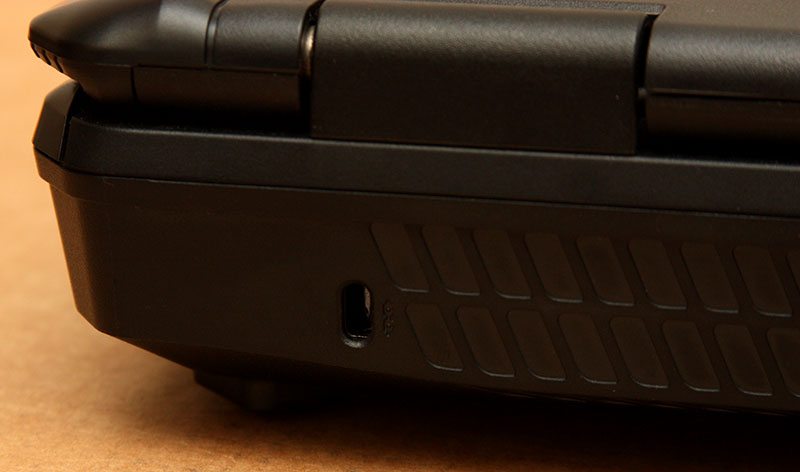
Although there are one or two variances in the range of display outputs available from model to model, all of the graphics card options that MSI has to offer gives us three display outputs to work with. In the case of this system this includes two mini-DisplayPorts and a single HDMI port.
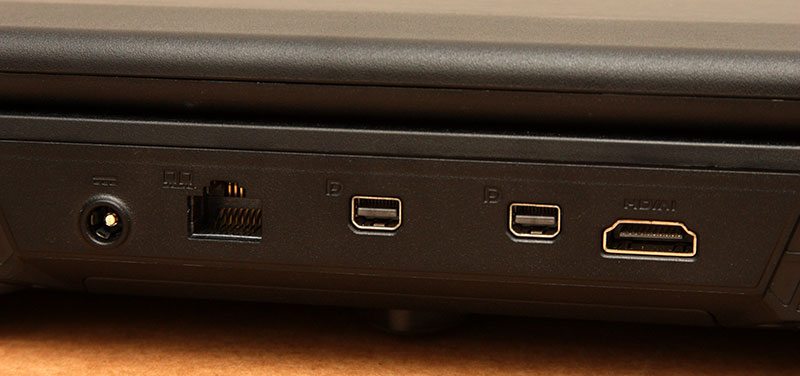
As we will see once I open up the underside of the workstation, cooling here is key. With two high performance components to keep cool, MSI have beefed up the cooling solution with a much greater heatsink surface area on offer. To vent out the heat, MSI have given the system two exhaust points, the first of which blows out the back of the system to push out heat generated by the Quadro GPU.
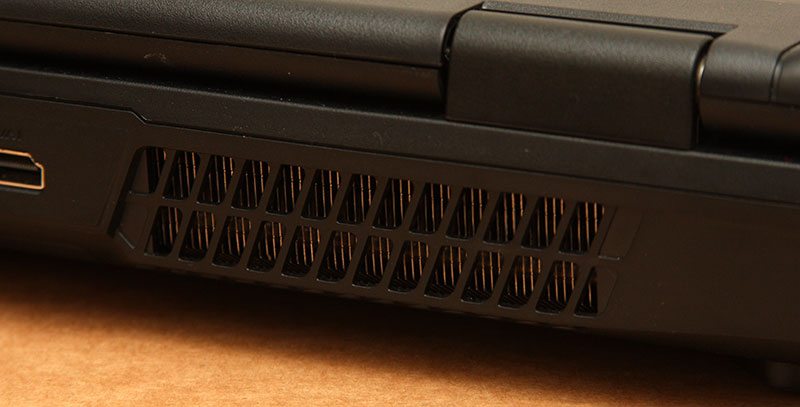
Opening the lid back up and working from the front of the system backward, we first note a nice large touchpad with a rocker button below for left and right-click operations. The surface of the touch pad has a very light brushed effect, enough to give you the response and touch that you need, but not too much to feel like there is excessive resistance. Below the touch pad is a line of five LEDs to indicate the status of both the Bluetooth and wireless radios, battery charging, sleep state and SSD/HDD/ODD operations.
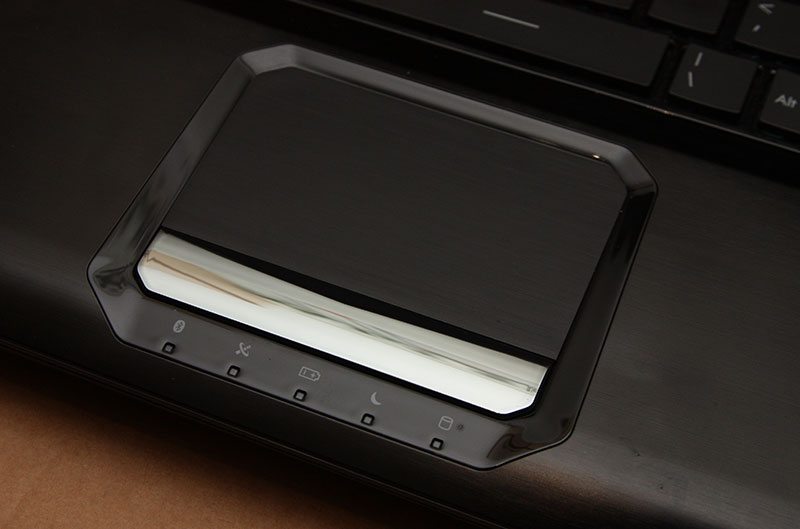
Above the touch pad we have on offer a membrane keyboard courtesy of SteelSeries and the same one that features on MSI’s gaming range of laptops. with a full 102 key layout, including a separate numerical pad to the right hand side.
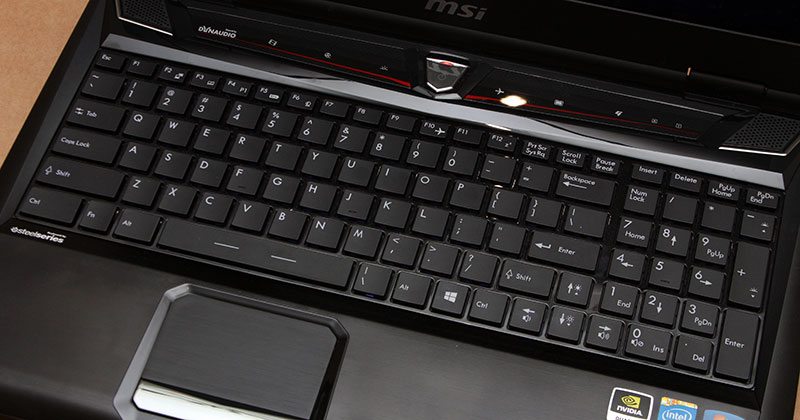
Underneath the keyboard is a full-colour back-light for use any time of the day with comfort.
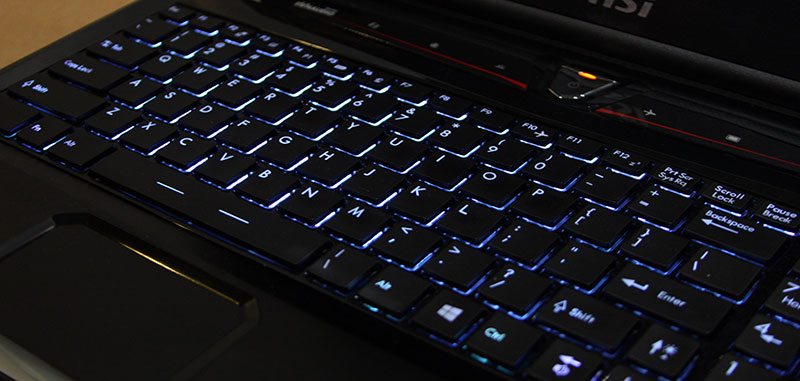
Above the keyboard lies on oversized power button in the middle with integral power LED. To either side of this is a series of LEDs, some with touch sensitive quick launch controls. Working from the left we have ‘Movie Mode’ which enhances video playback through the display and audio systems, ‘Cooler Boost’ to ramp up the cooling fans speed in order to cool to GPU and CPU more – ideal for image rendering situations and a keyboard backlight switch to turn on/off the lighting effect. On the right hand side we start with a self-explanatory ‘airplane mode’, display on/off, which does exactly as it says on the tin (reduces power whilst rendering a large project for example) followed by the G-panel which features on the gaming series systems. This button launches the system control manager through which certain features can be enabled/disabled and adjusted. lastly to the right is a pair of sole LEDs for caps lock and num lock.
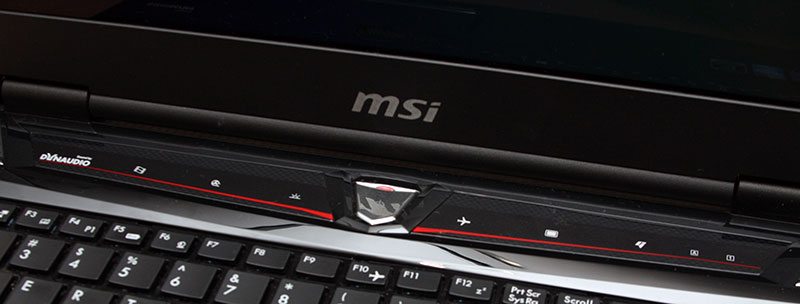
To accompany the high quality display, the audio is provided courtesy of Dynaudio; with a 2.1ch speaker system built-in to the laptop.
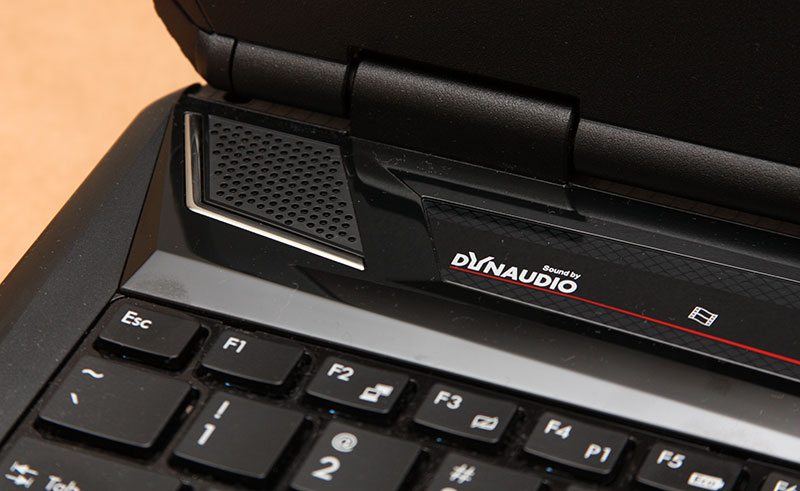
Lastly above the display is a built-in webcam, offering 30fps/720p video with a stereo microphone found just to the left hand side.
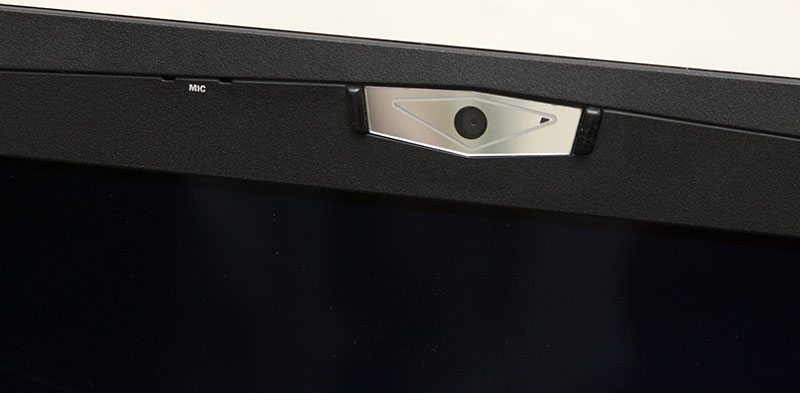
Trying to depict just how sharp this display is not an easy task. When I first got the system turned on and went to use it, it is remarkable just how sharp everything is and consequently the system icons and text is also very small. The image below is just on small portion of the screen and to put this into context, the icon sizes here are around 30% of that on a 1920×1080 panel of the same size whilst still packing the same level of detail.
![]()
Turning the system over and looking at the underside, the first thing we note is the mass of ventilation that has been made available, covering all the key components, leading up to the top right corner of the unit as seen below where the blower fan resides. Five large rubber feet and a single plastic foot in the middle below the touch pad, keep the system raised of the surface of a desk enough for adequate airflow in and under the laptop whilst in operation.
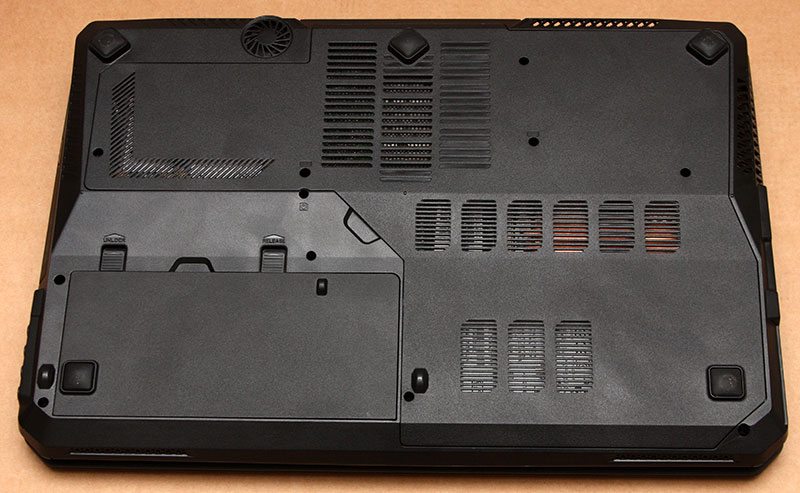
Lifting the 7800mAh battery out of the laptop we can see a sticker indicating that this is only an engineering sample and not a full retail specification system, although as said, systems with very similar specifications are available.
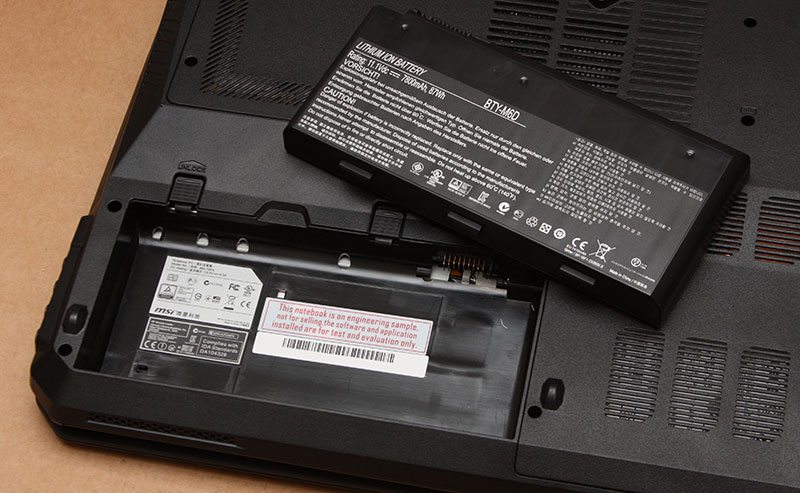
To accompany the two main drivers that make up the Dynaudio speaker system, a tiny sub woofer resides on the underside of the system to add clarity to the audio output.
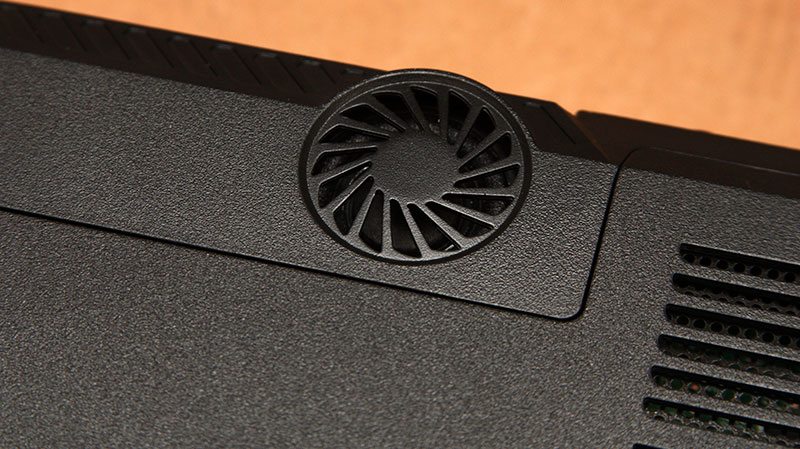
Lifting the service cover from the underside we can finally get a closer look at what makes this system tick. Surprisingly, the motherboard of the GT60-2OK does not take up a considerable amount of space, with other areas of the system being left for the battery, hard drive and SSD arrays plus the optical drive that lies above the battery and SSDs.
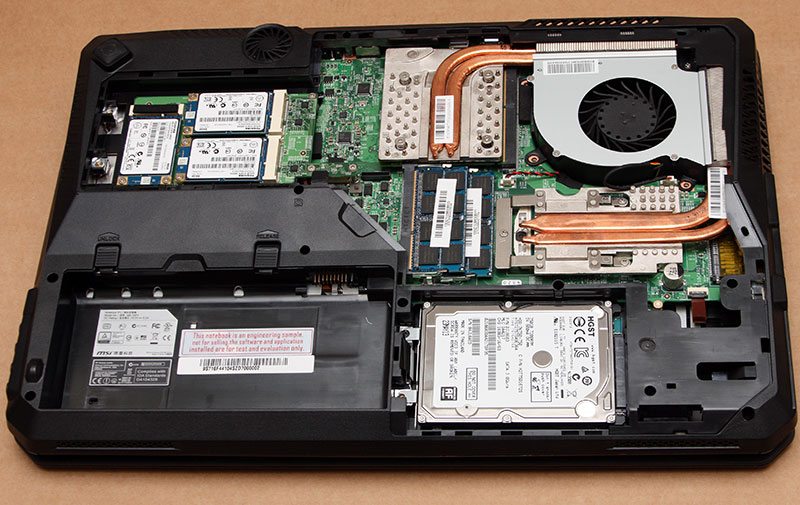
Looking closer at the SSD array we find three separate 64GB mSATA drives in place courtesy of Toshiba, although a 3x 128GB option is also available to give just under 400GB of high-speed storage. Now whereas most systems and laptops these days will have a single SSD for the operating system, the GT60-2OK has three separate drives all bound together in a RAID0 array to boost the systems speed and offer over 1.5GB/s read speeds and anywhere up to 1.2GB/s of write speed. MSI have named this layout as Super RAID 2 and is one of the unique selling points of this system and also the gaming equivalent laptop that MSI have to offer.
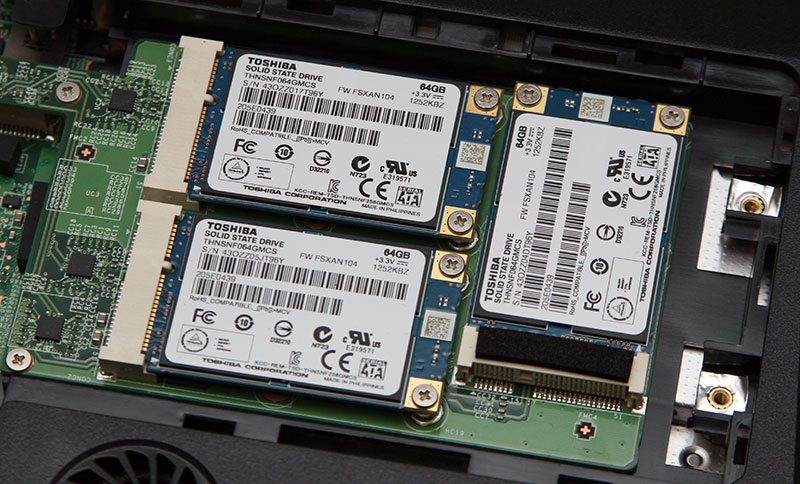
To run alongside the Super RAID 2 system, MSI team the SSDs up with a separate hard drive for high density storage for multimedia content and any other data that needs to be stored. Whilst we only have a 750GB HGST drive here in our engineering system, retail models offer up to 1TB of storage on a similar HGST drive.
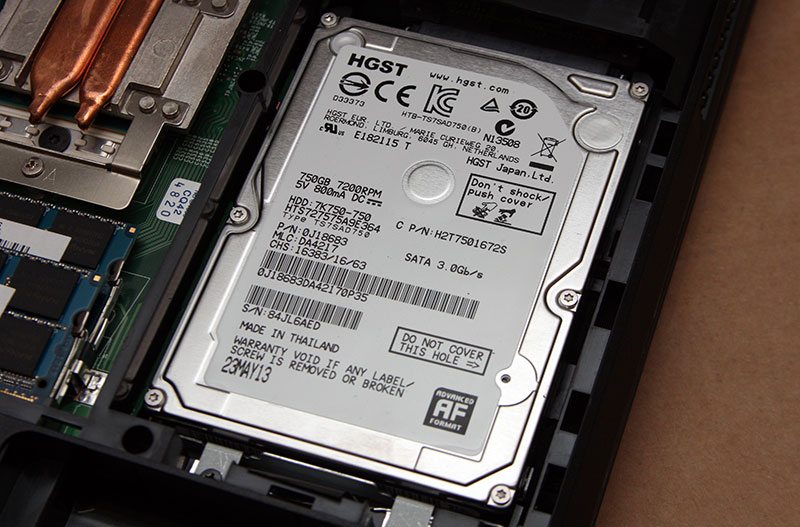
Looking a little closer at the three main components that reside on the motherboard, we can firstly see the dedicated Quadro K2100M GPU to the left-hand side with the CPU to the right. Both parts have a twin heatpipe setup running to separate heatsinks in the case of this unit with a single blower fan pushing air out through both heatsinks at the same time. Retail model have a slightly different cooler which features a bridge between the two heatsinks to improve the cooling efficiency of the system overall. Next to the GPU are two of four banks of memory (two of which are found on the other side of the motherboard below the keyboard. Whilst most laptop systems offer a reduced amount of memory over a comparable desktop system, this workstation laptop as seen on this sample packs up to 32GB of DDR3 1600MHz memory speeds.
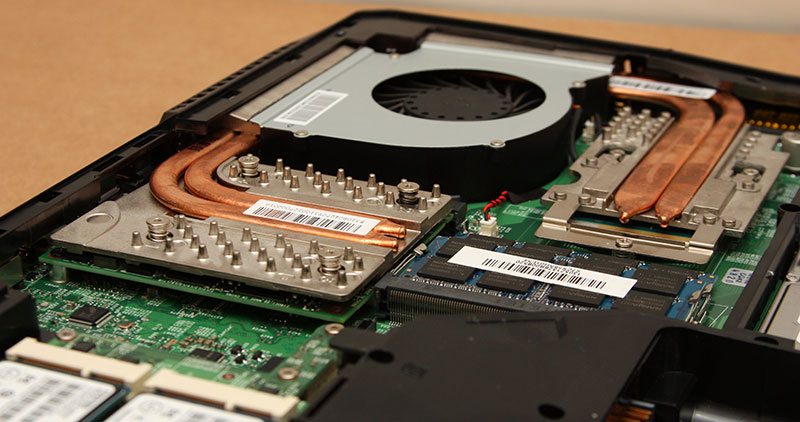
The last item that I want to just touch on before we look at how this system performs is to do with the power adaptor. Naturally the more powerful a system is, the greater its power demands. Take for instance the Samsung Ativ Book 9 Lite that I looked at only the other day. With a tiny 38w TDP, the AC adaptor required was tiny. In the case of the GT60-2OK, the adaptor is considerably larger and heavier and to put the size into context, here is the brick with a standard AA-sized battery beside it for reference.
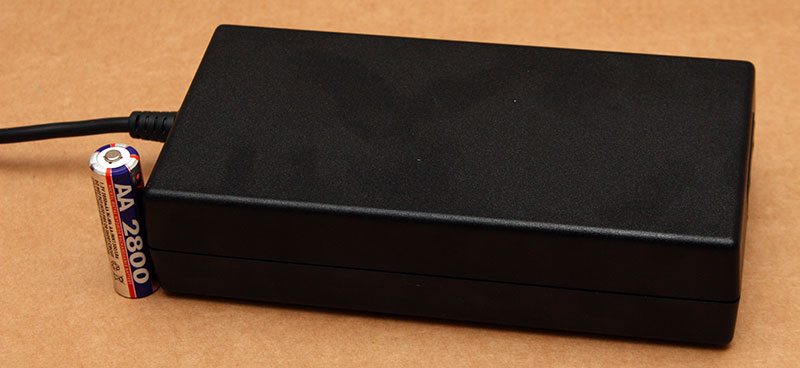
Turning the adaptor over, it soon becomes clear just how much power is needed by this system. Pushing out 180W of power (that’s the out put voltage of 19.5v multiplied by the current of 9.2A for those that didn’t know how to work out the wattage), this is certainly the most power-hungry laptop that I’ve had to play with to date.
